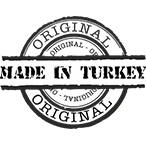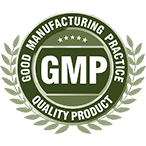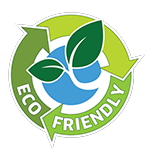Chemical Absorbents
Chemical absorbents are special materials designed for chemical leaks and spills. These products help minimize environmental damage and increase safety in workplaces by absorbing various chemicals. They are often used to absorb and contain acids, bases and other hazardous chemicals.
Chemical Absorbents
Chemical Absorbents are specialized materials designed to effectively absorb and contain chemical spills and leakages, particularly in industrial and laboratory environments. These absorbents aim to reduce the potential harm of hazardous substances to the environment and human health.
Chemical Absorbent Types
Chemical absorbents can be made from a variety of materials and in a variety of shapes. The most common chemical absorbent materials are:
- Chemical Absorbent Pillow: A chemical absorbent pad is a thick absorbent material used to absorb oil and chemical spills. It is usually produced from paper, cotton or synthetic materials.
- Chemical Absorbent Sock: A chemical absorbent swab is a long, cylindrical absorbent material used to absorb oil and chemical spills. It is usually produced from paper, cotton or synthetic materials.
- Chemical Absorbent Boom: A chemical absorbent sausage is a long, cylindrical absorbent material used to absorb oil and chemical spills. It is usually produced from paper, cotton or synthetic materials.
- Chemical Absorbent Roll: A chemical absorbent roll is a long, cylindrical absorbent material used to absorb oil and chemical spills. It is usually produced from paper, cotton or synthetic materials.
- Chemical Absorbent Pad: A chemical absorbent pad is a thick absorbent material used to absorb oil and chemical spills. It is usually produced from paper, cotton or synthetic materials.
Features and Functions of Chemical Absorbents
-
High Absorption Capacity and Selectivity:
- Chemical absorbents have the capacity to rapidly absorb various chemical liquids such as acids, bases, and other hazardous chemicals. Some absorbents are designed to target specific types of chemicals.
-
Application Areas:
- Industrial Facilities: Used to clean spillages and leakages in chemical manufacturing plants, refineries, and other industrial operations.
- Laboratories: Provide protection against chemical spills and enhance laboratory safety.
- Emergency Response: Used for quick intervention in chemical accidents and spillages.
-
Available in Various Forms:
- Chemical absorbents come in different forms, including absorbent pads, rolls, socks, pillows, and mats. This variety allows for adaptability to different spillage and leakage scenarios.
-
Safety and Environmentally Friendly Practices:
- Chemical absorbents prevent spilled chemicals from harming the environment and human health.
- When used correctly, they enhance safety in workplaces and reduce environmental impacts.
-
Ease of Use and Waste Management:
- The use of chemical absorbents is generally straightforward and provides effective waste management. After use, these materials are sent to specialized waste collection points or disposed of safely.
Application and Sustainability
- Effective use of chemical absorbents requires the selection and application of the right material.
- They are important for quickly and safely cleaning hazardous chemical spillages.
- Sustainable practices help reduce the environmental and health impacts of chemical spillages.
Chemical absorbents play a critical role in managing chemical spills and leakages in industrial and laboratory settings. Their various forms and high absorption capacities ensure the safe and effective cleanup of hazardous chemicals.
Read More


